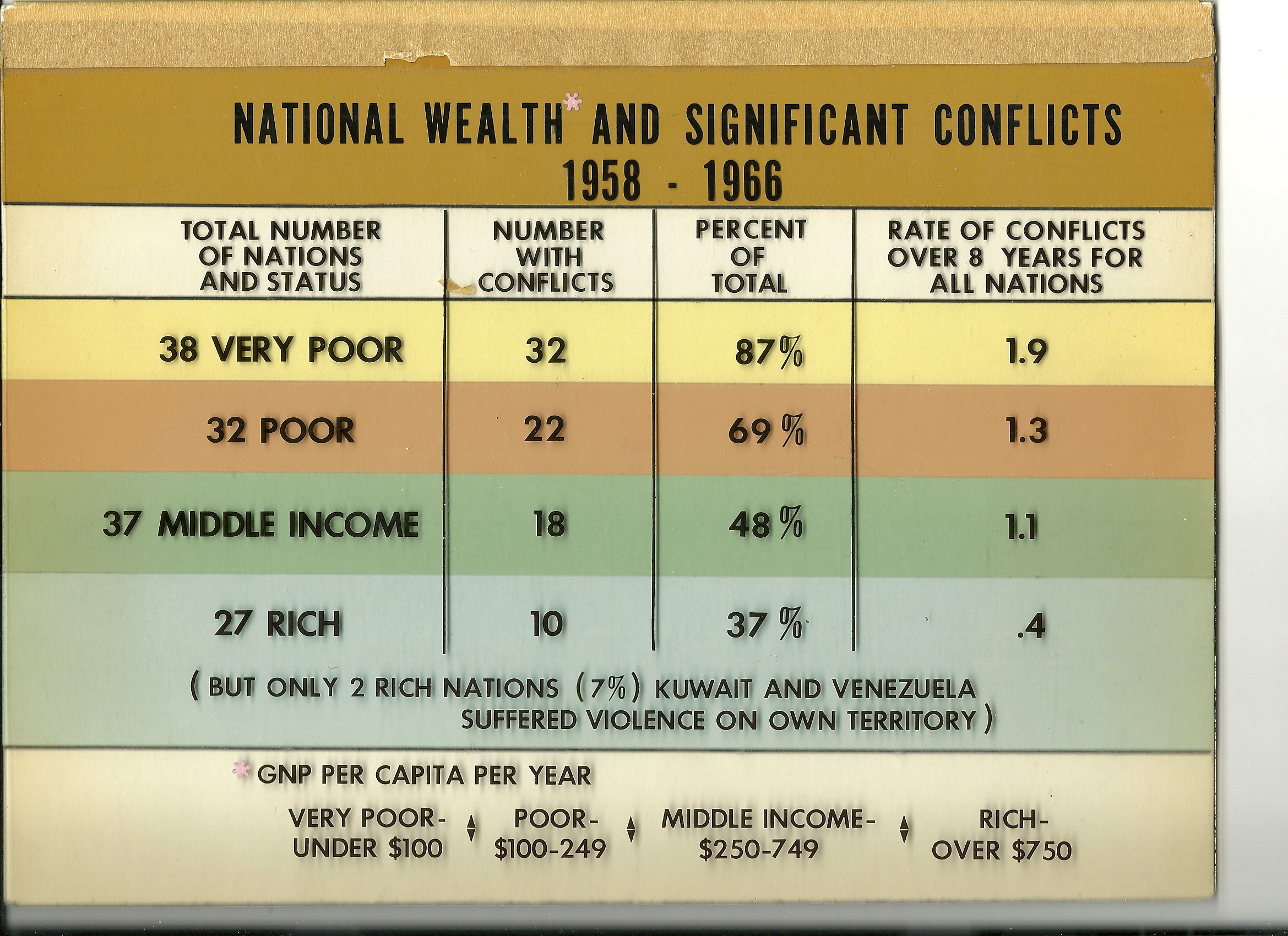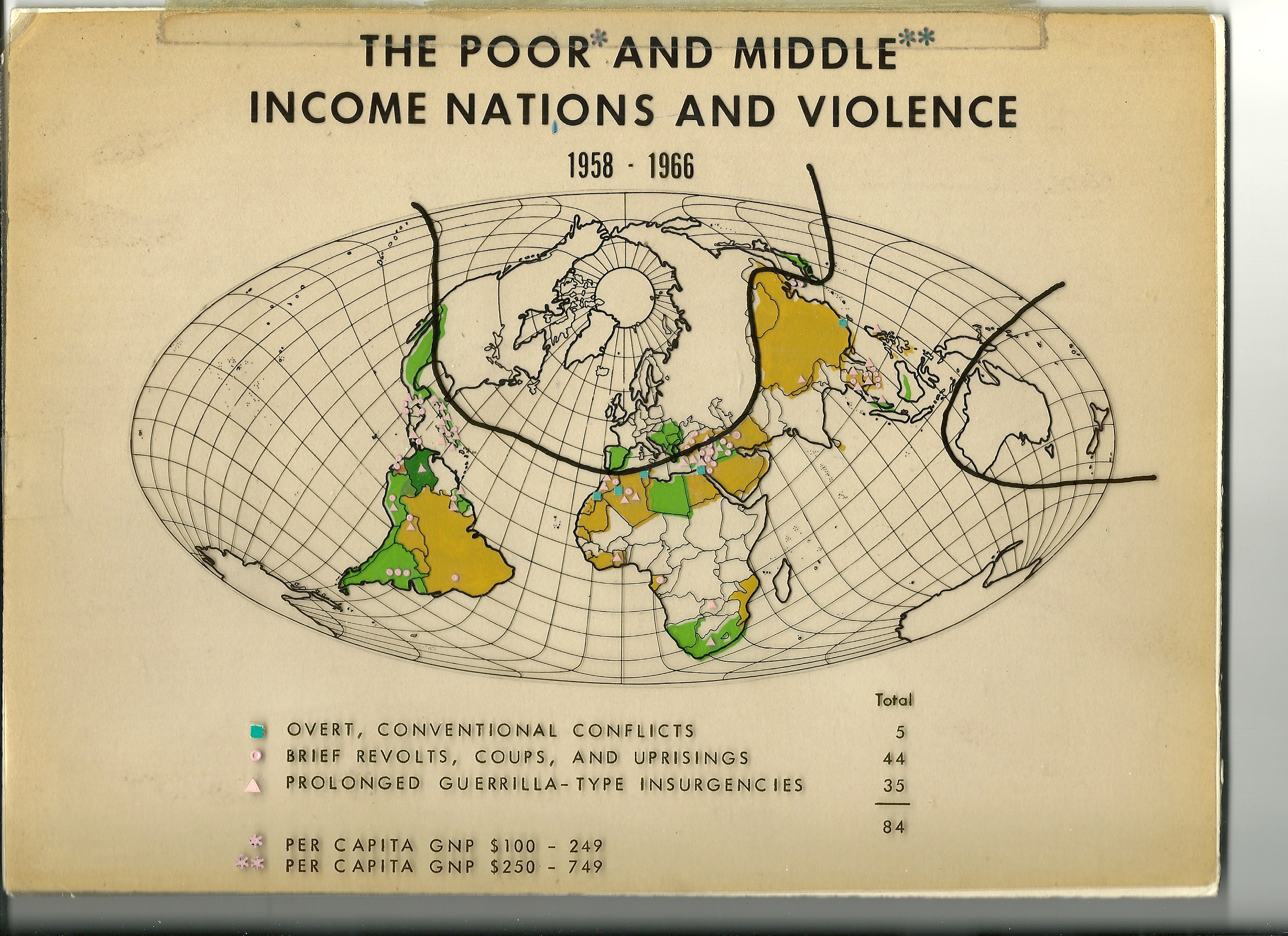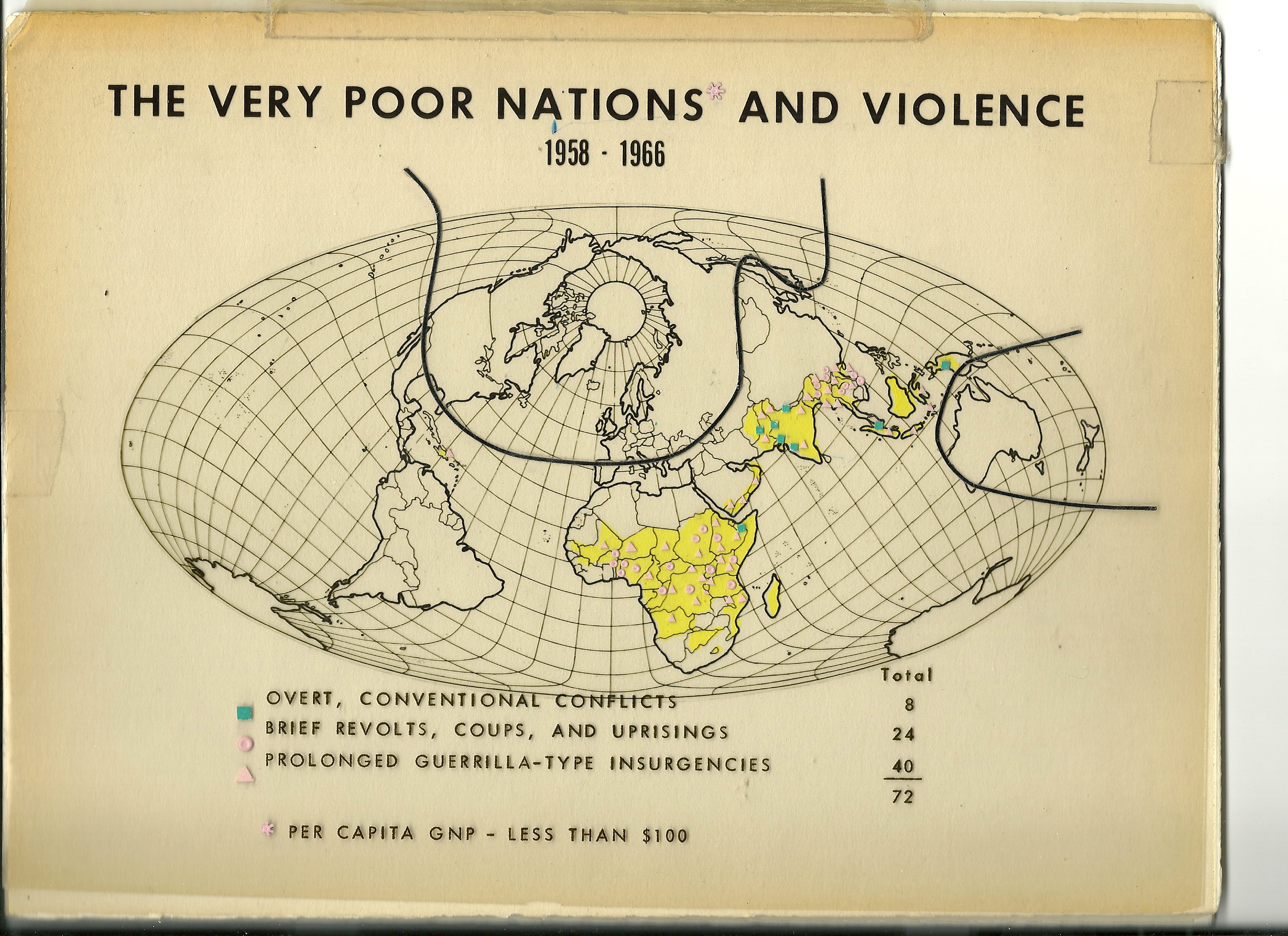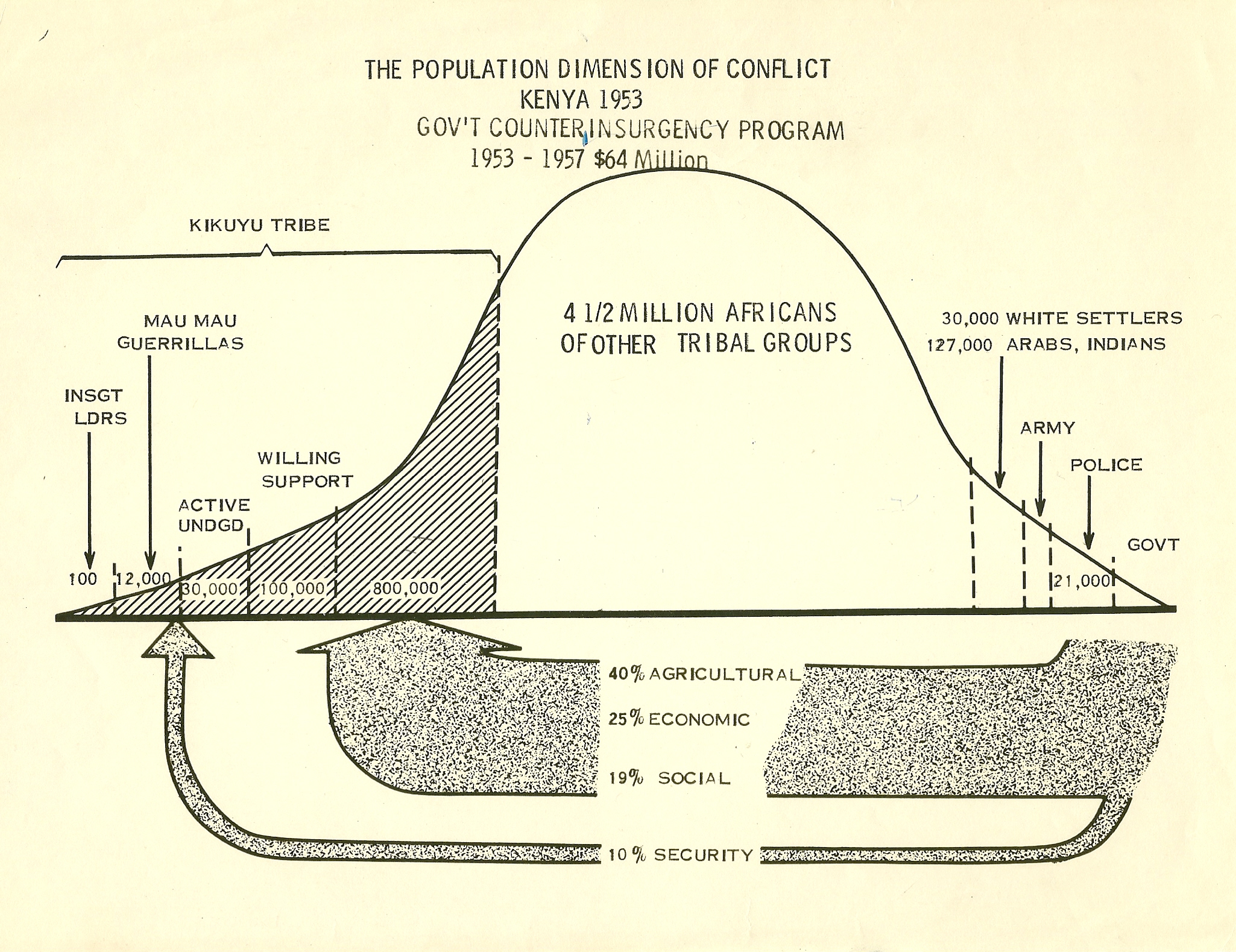Some Global Correlations - Economy/Conflict
Now we began to see that armed conflicts were occuring at a faster rate in the poorest nations. Natural uprisings by the poor? Or conflicts started in the poorest nations by outside powers which have their own reasons for wanting those governments challenged?
 |
|
|
 |
|
Either conventional conflicts, or brief revolts occur in per capita rich nations.
|
 |
|
But in the Middle income and Poor nations, there is a shift toward prolonged guerilla wars or insurgencies.
|
 |
|
But the very poorest nations have the greatest number of prolonged guerilla-type insurgencies. |
And so we had a MAJOR correlation between the per-capita income and not only the frequency of conflict, but the type of conflicts - i.e. wars!
This insight told US policy makers that they needed to be PREPARED to deal with the most typical type of conflicts - insurgencies. And indeed that reality, known above all to Communist regimes, many of whom learned from the experience of the Chinese Communists in fighting and overthrowing the Nationalist government, made these 3d world 'nations' vulnerable to their stimulation and support for insurgencies whose desired outcome is to overthrow their Western Style government and create a new communist regime.
Shifting Understanding by Policy Makers
The study, as circulated, not only within the Army Staff, but long range planners of the other services, staffs of the Joint Chiefs of Staff, and civilian members of the International Security Affairs staff of the Secretary of Defense office, began to change the thinking of those wrestling with their current war, but also future potential 'Insurgent Wars.'
The reality sunk in that such wars were Asymmetric - that the Insurgents - especially those following the model refined by China's Mao in his 'Wars of National Liberation' Doctrine - used subversive recruitment, assassination, propaganda, hit and run tactics, guerilla warfare, and above all intentionally waged PROTRACTED warfare, to wear down the will of the resisting population.
While in all cases we studied where governments successfully defeated such tactics such as over the Mau Mau of Kenya, the Philippine and Malayan Communist Inssurgencies - they answered by undertaking major efforts to convert the population with economic development, political reform, police more that Army forces. The next two charts dramatically show, in the case of the 1953 to 1957 Kenyan Insurgency, just where the Insurgents applied their efforts as contrasted with the efforts by the then-British colonial government.
 |
 |
|
Where the Mau Mau focused their efforts, versus where the British focused theirs is obvious from the above. And the British were successful in ending the Insurgency. |
And the most fundamental recognition within the US Government began to dawn. Besides being Assymetric struggles, that such Wars are far more wars fought within and by 'People versus People' more than between Military and Military fighting over terrain.
In the next section I will sum up the whole host of additional findings that the Study done by Paul Gorman and I revealed. And as he moved onto a new assignment, I was left to brief the study, which led to my being contacted to get me on the Secretary of Defense's Staff.
It was already too late by 1965 to save the massive and largely misdirected US efforts in Vietnam, but not too late to learn, not only from the mistakes in Vietnam, but to start to craft a new set of national policies for future wars at the 'lower spectrum of war'
